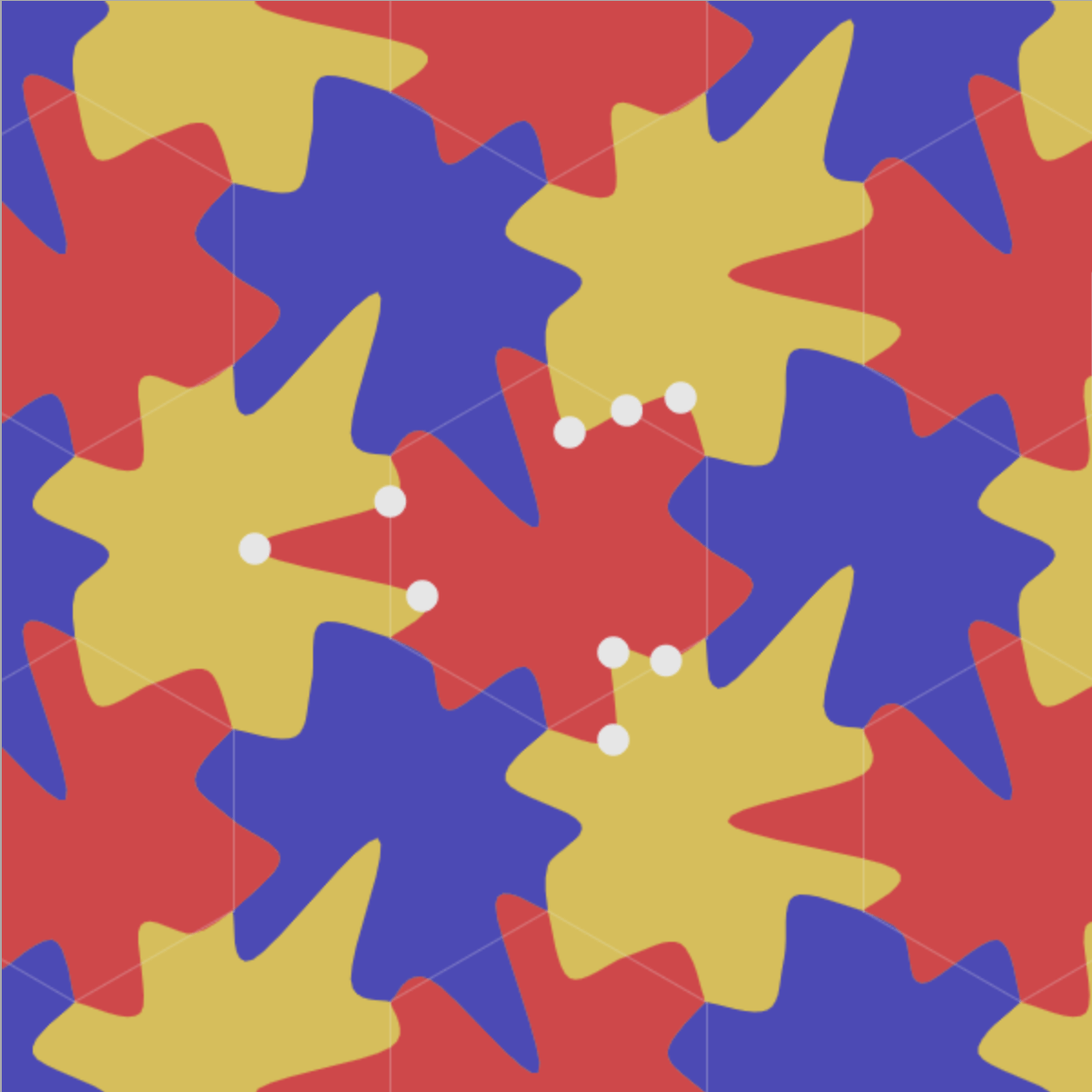
Then as a class, make a collage of the pictures that the students found.Īn activity for older students is to use different types of pentagonal patterns and have them tessellate the different types. Udents could do is to look through magazines and find pictures of tessellations. They would also discover that there is no overlapping or places not covered. Students could continue to do this until they discover that they could cover the whole piece of paper by doing this. They could take one of the pattern pieces and trace it on a blank piece of paper then take the shape and line it up to one side of the tracĮd shape and trace it again. Students could put the shapes together so that they cover a surface completely. You could create your own pattern pieces by cuttin With young children you could have them learn about tessellations with pattern block pieces of geometric figures such the square, rhombus, triangle, hexagon, and rectangle. Colors could also be considered when looking for lines of symmetry. T designs have a particular number of lines of symmetry, or they could find the design with the most lines of symmetry. Students could find the lines of symmetry in the designs, they could see how many differen See the picture below for examples of lines of symmetry (John VandeWalle & Charles S. Tessellation patterns produce many lines of symmetry.

Another thing that students could do is to find as many shapes as possible with a particular area and see what they can discover about the perimeter of the shapes. Students could find as many shapes as possible in a tessellation that have a particular perimeter and then see what they can discoverĪbout the areas of the shapes, using one tile as a unit. Ideas about area and perimeter can be combined for students to discover how they are different without using formulas.

Later students could be given one or two tiles as a unit of measure and using them they could calculate the area of a large design. They could make with an area of six rectangles (or any other specified area). Students could look for shapes with specified sizes. Students could compare many different shapes within a design and try to figure out which shape is bigger by using the idea that area is a measure of covering. Students could trace around a small set of tiles in a pattern and find that by counting the tiles they can tell how big the shape is Tiles that are arranged so there are no holes or gaps can be used to teach students that area is a measure of covering. Another thing that students could do is to find a shape that has exactly 10 units (or any other specified number of units) for the perimeter. One thing that the students could do is to calculate the distance from one point to another in a tessellation if they hĪd to walk a certain path on the cracks between the tiles. Ts could use the lengths to calculate perimeter of the different tiles or the perimeter of the shapes that they used the tiles to make. The tiles could be used to talk about perimeter. Once students know what the length is of the sides of the different tiles, they could use the information to measure distances. Tiles used in tessellations can be used for measuring distances. S are not the usual geometric shapes the students could sketch a picture of the design or shape that they found. Students could possibly find how many different shapes they could make with six (or any number) tiles. So students could find some tiles that make a square, a large triangle, a hexagon, etc. Two or more tiles usually make some other shape. Students could count how many tiles are in a certain row (or square, or group, or triangle), they could count how many of the tiles arĮ colored a certain color, or they could find a group of eight diamonds (or any other specified shape). Since tessellations have patterns made from small sets of tiles they could be used for different counting activities. G the tessellation patterns, makes it worth the time spent on teaching about them. Just the problem solving, that is part of creatin The older the students, the more complicated the artwork and patterns can be. All students have an equal chance to make wonderful artwork and patterns with tessellations.

Creating tessellations does not depend largely on numerical skills therefore students with many different levels of mathe They can be used from kindergarten to high school. Tessellations can be very useful in education and in teaching mathematics.


 0 kommentar(er)
0 kommentar(er)
